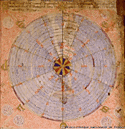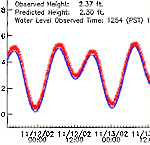|
|
|
|
||||||||||||||||||||
|
Dance
of the Tides
All good surfing beaches have what's called a break , a place where the beach drops off under the water. The break is where the waves crest, and therefore is where surfers catch their rides. The depth of the water over the break changes with the tides: The water is deeper when the tide is high, shallower when it's low. At some point in the tide cycle, the water will be at its best depth for making good surfing waves. Problem is, that depth and that time in the tide cycle depend on factors unique to your beach—where the break is, the slope of the beach, etc. T he bottom line is that tide affects surf, but in order to make the most of it, you need to know your beach.
Spend a month on your beach, and you'll start to get a good sense of its tidal cycles. Each day, there are two high tides, and each day they arrive about an hour later than the day before. As the moon waxes from first quarter to full, the high tides get higher. They fall back as the moon wanes toward third quarter then rise again as the moon approaches new. The motions of the tides have been known for centuries. Long ago, people noticed that there is a connection between the moon and the tides. The moon rises about an hour later each day, just as the tides do, and the heights of the tides follow the phases of the moon. The largest tidal range, the difference between the height of the low and high tides, comes at new moon and full moon, while the smallest range comes at first-quarter and third-quarter moons. Although the details of tidal motion are complex, the basic ideas were worked out in the seventeenth century by Isaac Newton. We've cooked up a few activities to help you investigate the tides. But first, a little background information to consider: |
|
|||||||||||||||||||||
|
copyright Exploratorium |
||||||||||||||||||||||



